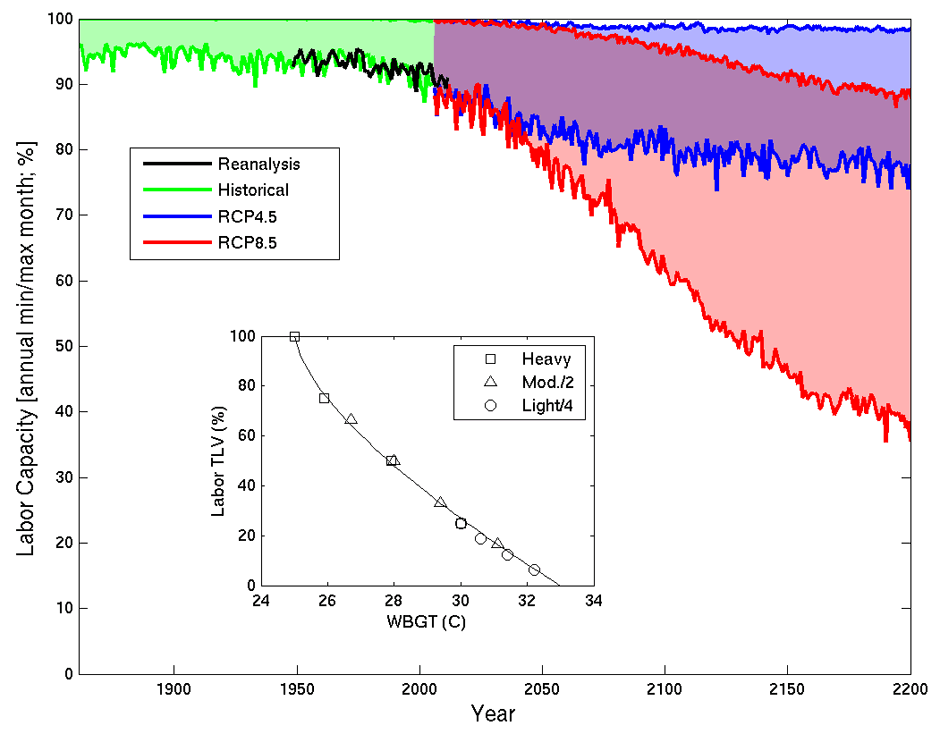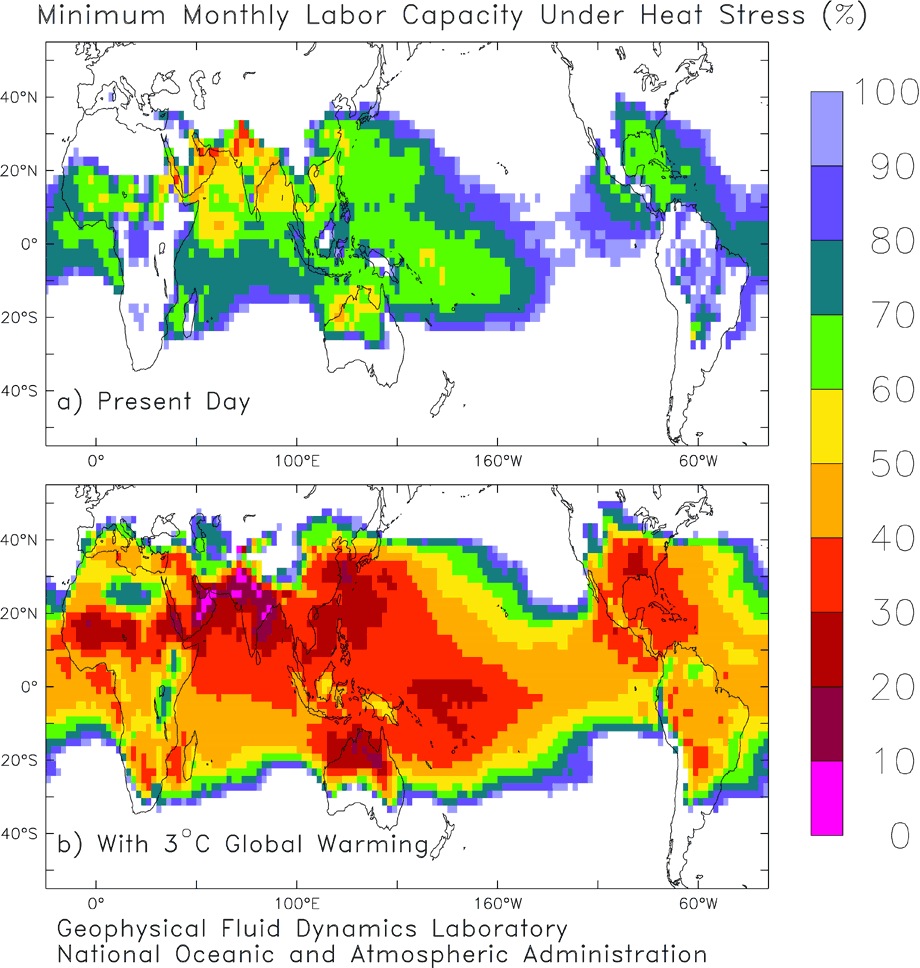February 24th, 2013
Key Findings
Due to projected increases in temperature and water vapor in the atmosphere:
- Labor capacity losses related to heat stress are projected to double globally by 2050 with a warming climate.
- Global warming of more than 6°C (11°F) eliminates all labor capacity in the hottest months in many areas, including the lower Mississippi Valley, and exposes most of the US east of the Rockies to heat stress beyond anything experienced in the world today. In this scenario, heat stress in NYC exceeds present day Bahrain, and Bahrain heat stress would induce hyperthermia in even sleeping humans.
- Only by limiting global warming to less than 3°C (5°F) do we retain labor capacity in all areas in even the hottest months.
John P. Dunne, Ronald J. Stouffer, and Jasmin G. John. Journal: Nature Climate Change. DOI: 10.1038/nclimate1827
Summary
The authors use existing occupational health and safety thresholds to establish a new metric to quantify a healthy, acclimated individual’s capacity to safely perform sustained labor under environmental heat stress (labor capacity). Using climate model projections, we apply this metric to quantify the direct impact of global warming on the global human population in the future.
Currently, peak months of heat stress reduce population-normalized labor capacity to about 90%. By mid-century, the labor capacity falls to about 80% during peak months. With global warming relative to pre-industrial conditions of 2°C (4°F), labor capacity is reduced to 74% in peak months. In a high emission scenario of 6.2°C (11°F) warming, the labor capacity is reduced to 39% in peak months. In this much warmer world, many areas would not be able to sustain human labor without environmental control during the warmest months of the year.
All organisms, including humans, have a temperature range over which they can environmentally adapt. Most studies of the direct impact of global warming on humans have focused on mortality under extreme weather events. Unfortunately, these efforts suffer from uncertainties in separating environmental stressors from other factors impacting mortality. This research establishes a new metric, labor capacity, using existing occupational thresholds. In this study, wet bulb globe temperature (WBGT) is used as a measure of combined thermal and humidity stress on human physiology and activity. The metric is of broad societal utility and quantifiable using WBGT, which is easily computed from climate model output. We estimate WBGT from both historical observational record (NCEP/NCAR reanalysis) and one of GFDL’s coupled carbon-climate Earth System Models (ESM2M). We bias-correct the model to present historical and projected maximum WBGT values under active mitigation (RCP4.5) and highest emissions (RCP8.5) out to 2200. This work represents a fundamental step forward in our ability to quantify the direct impact of climate warming on the global human population, finding that even under active mitigation of CO2 emissions, labor capacity reduction due to heat stress doubles by the middle of this century, with severe reduction of labor capacity due to environmental heat stress inferred under continued highest emissions out to 2200.


Known Uncertainties:
Uncertainties and caveats associated with these projections include climate sensitivity, CO2 emissions, ocean and atmospheric CO2 uptake, future population distributions, technological and societal change, representation of inter-annual variability of WBGT and its potential to change, and the relation of monthly average conditions to the diurnal cycle, weather and spatial patterns. In focusing on the capacity of healthy, acclimated individuals, this study also severely underestimates heat stress implications for less-optimally acclimated individuals such as the young, old, and sick.


